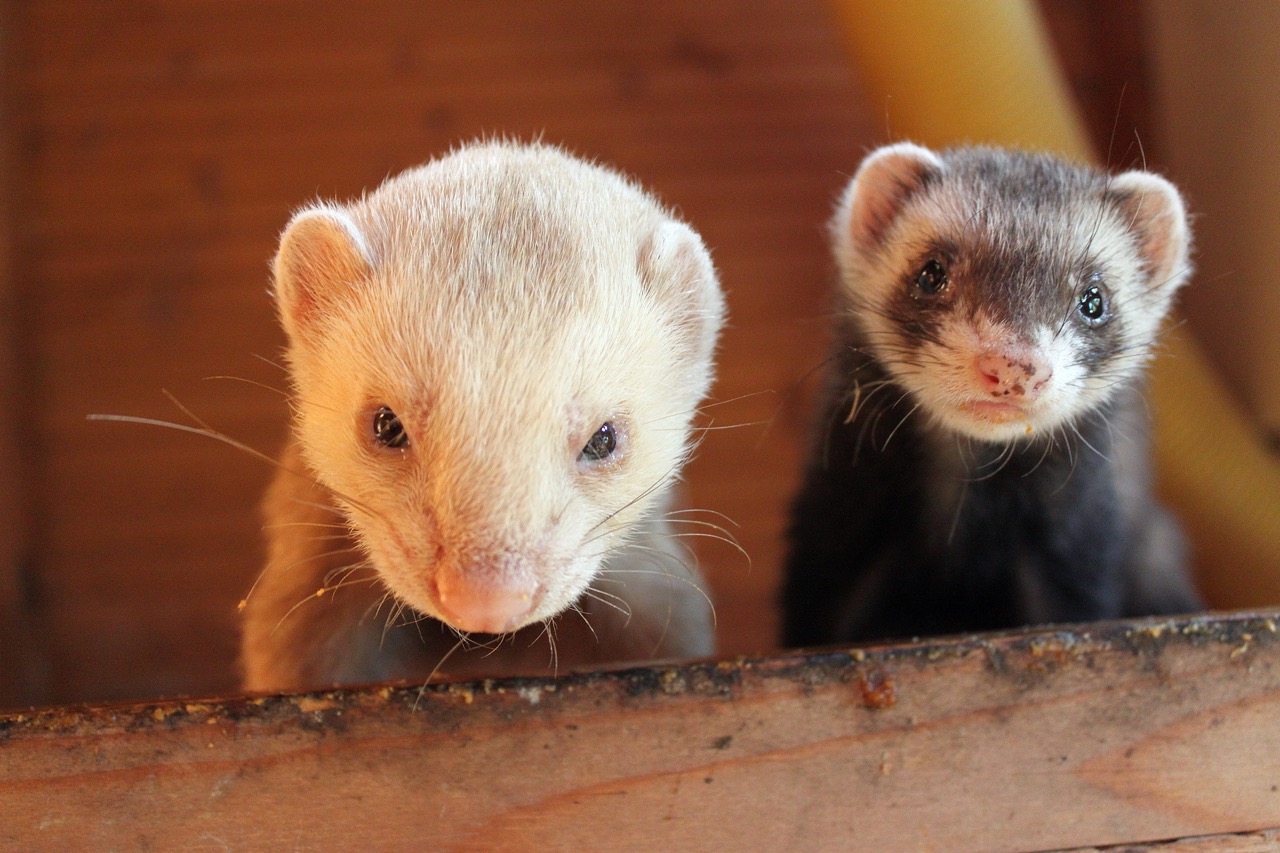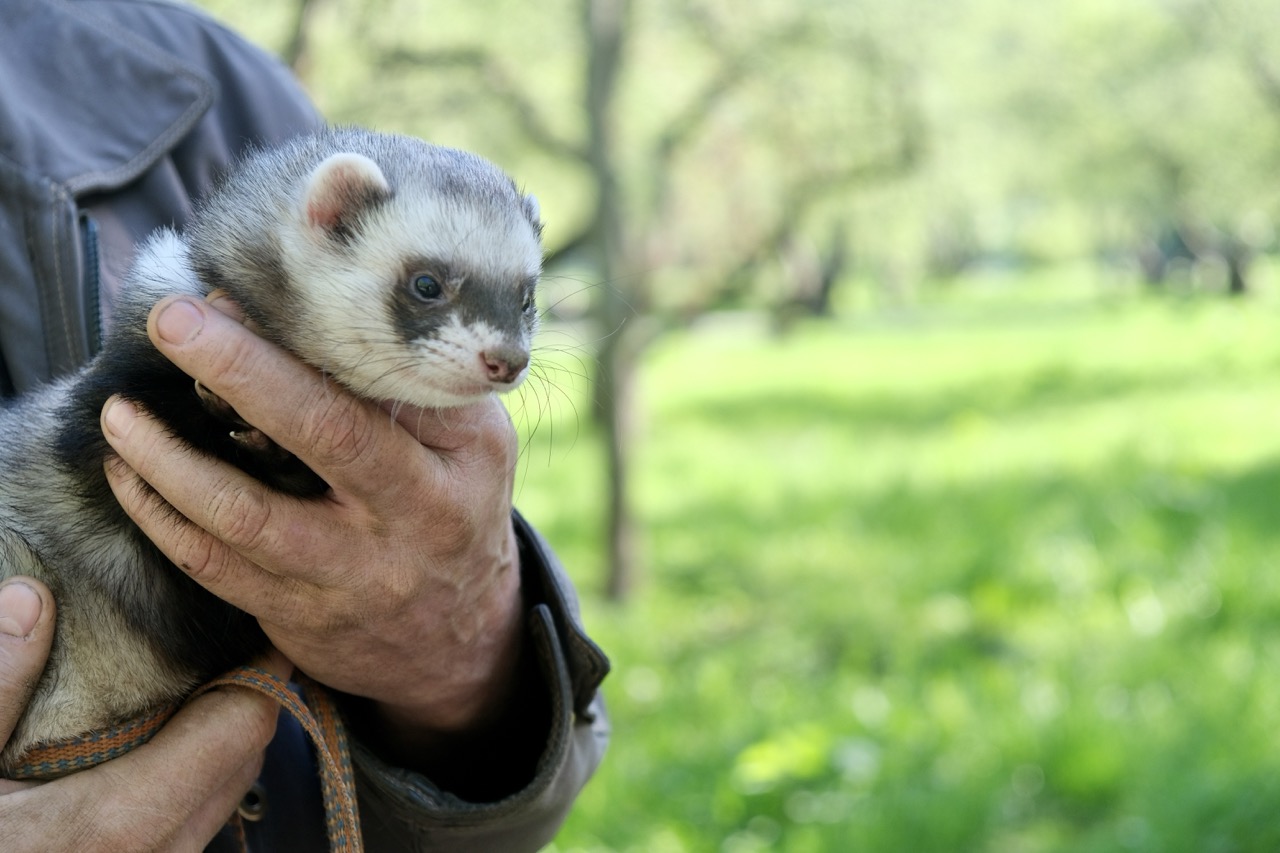When considering the care of a ferret, one of the primary aspects to focus on is the provision of adequate space. Ferrets are highly social, active, and curious creatures that require both physical space and mental stimulation to thrive. Understanding their behavior and needs is crucial for any responsible ferret owner. This article will delve into the necessary aspects of providing the right amount of space for your ferret, including their behavior and space requirements, optimal cage sizes, the importance of enrichment, and tips for designing a ferret-friendly home.
Understanding Ferret Behavior and Space Requirements
Ferrets are naturally inquisitive animals that explore their surroundings with great enthusiasm. They are known for their playful antics, which involve running, jumping, and tunneling. This behavior stems from their instincts as hunters and foragers in the wild, where they would cover large areas in search of food and shelter. Because of their energetic nature, ferrets require ample space to roam, play, and express these natural behaviors, which can significantly impact their mental and physical well-being.
As social animals, ferrets also benefit from interaction with their owners and other ferrets. They thrive in an environment that allows for socialization and play, which requires more than just a confined space. The standard advice is to provide a minimum living area of at least 2-3 square feet per ferret in a cage, but beyond that, they need additional time outside their cage for exercise and exploration. A well-thought-out space helps to reduce stress and prevent behavioral issues, making it essential to understand their needs.
Moreover, ferrets are known for their burrowing instincts, which means they enjoy hiding in small spaces. Providing an environment where they can safely explore, dig, and hide will not only cater to their natural instincts but also provide them with a sense of security. Owners should bear in mind the importance of space not just in terms of square footage, but also in providing a variety of environments that stimulate their senses and allow for safe exploration.
Optimal Cage Size for Your Ferret’s Comfort and Health
When selecting a cage for your ferret, size is one of the most critical factors. A single ferret requires a minimum of 24 inches tall and 24 inches wide, with a floor space of at least 2-3 square feet. However, larger cages are always preferable. Multi-level cages with ramps and platforms allow ferrets to climb and explore vertically, which can mimic their natural behavior and provide more room for play and rest. It’s essential to choose a cage that is not only adequately sized but also safe and escape-proof, as ferrets are notorious escape artists.
In addition to size, the layout of the cage plays a crucial role in your ferret’s comfort and health. The interior should be furnished with bedding, litter boxes, food and water dishes, and enrichment items such as hammocks, tunnels, and toys. Each of these items should be arranged to maximize space and make the cage an inviting environment for your ferret. Ensure that the cage is cleaned regularly to maintain hygiene and prevent odors, as a clean environment is vital for your ferret’s health.
It’s also important to consider the location of the cage within your home. Ferrets are sensitive to temperature changes and loud noises. Their cage should be placed in a quiet area that is away from direct sunlight and drafts. A designated spot in a common area allows for interaction while ensuring that your ferret feels secure and at ease in their living space.
Enrichment: Creating a Stimulating Living Environment
Providing adequate space is only one part of ensuring your ferret’s well-being; the right kind of enrichment is equally crucial. Ferrets are intelligent animals that require mental stimulation to prevent boredom, which can lead to destructive behaviors. Enrichment can come in various forms, including interactive toys, climbing structures, and even tunnels to navigate. Simple items like cardboard boxes or paper bags can also offer hours of fun and exploration.
Physical activities are just as important for your ferret’s enrichment. Consider creating a designated play area outside of their cage where they can safely explore and expend energy. This area should be ferret-proofed, ensuring that potential hazards like electrical cords, small objects, and toxic plants are removed. Regular playtime not only helps keep your ferret physically fit but also strengthens the bond between you and your pet.
Additionally, rotating toys and changing the layout of their living space can keep your ferret curious and engaged. Ferrets are keen to explore new environments, so introducing new elements every few weeks can renew their interest in their surroundings. By providing a stimulating environment filled with various activities and challenges, you can ensure your ferret remains happy, healthy, and mentally active.
Tips for Designing a Ferret-Friendly Home Space
Creating a ferret-friendly home is essential for both their safety and happiness. First, assess your living space and identify areas that can be designated for ferret activities. Use gates or barriers to restrict access to places that are unsafe or cluttered, ensuring that your ferret can explore freely in a secure environment. Keeping your home organized will not only protect your ferret but also help you manage potential hazards.
Safety is paramount when designing your ferret’s living space. Make sure to remove any potential ingestible items, toxic plants, or small objects that they could chew on. Ferrets are known for their tendency to explore by taste, making it crucial to keep any hazardous substances well out of reach. Ensure that furniture is stable and that any cords or wires are secured to prevent chewing.
Lastly, consider the social needs of your ferrets by integrating them into your daily life. Ferrets benefit from being part of a household where they can interact with you and your family. Creating a designated area for them to safely play while you are present allows for supervised exploration and bonding time. By taking these steps, you can create a welcoming and safe environment that caters to your ferret’s instincts and social needs.
Providing the right amount of space for your ferret is a vital aspect of their care that encompasses more than just physical dimensions. Understanding their behavior, ensuring optimal cage size, incorporating enrichment, and designing a ferret-friendly home space are all essential components. By taking the time to create a stimulating and secure environment, you not only enhance your ferret’s quality of life but also build a stronger relationship with your pet. With these considerations in mind, your ferret will undoubtedly thrive in a space that feels like home.










